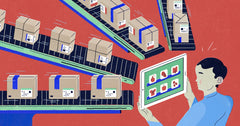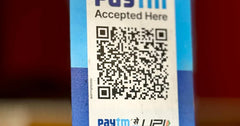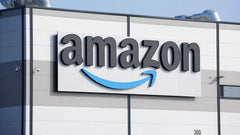
The Evolution of E-commerce Fulfillment: Speed, Technology, and Consumer Expectations
Table of Contents
- Key Highlights:
- Introduction
- The Importance of Delivery Speed
- Enabling Faster Fulfillment
- The Role of Automation
- Alternative Delivery Options
- The Shift to In-store Fulfillment
- Collaboration and Outsourcing
- The Future of E-commerce Fulfillment
- FAQ
Key Highlights:
- Growing Demand for Speed: A significant majority of online buyers (52%) prioritize faster delivery, making it a critical factor for retailers aiming to enhance customer satisfaction and loyalty.
- Technological Advancements: The integration of AI and automation in logistics is reshaping e-commerce fulfillment, enabling faster and more efficient delivery processes.
- Alternative Delivery Solutions: Innovations like parcel lockers and out-of-home delivery options are gaining traction, providing consumers with more flexible and convenient ways to receive their orders.
Introduction
In the competitive arena of e-commerce, the quest for faster delivery has become a defining factor in customer loyalty and satisfaction. With consumers increasingly conditioned by giants like Amazon to expect not only speed but also affordability, retailers are facing mounting pressure to refine their fulfillment practices. The recent E-commerce Trends Report from DHL highlights that a staggering 52% of online shoppers desire quicker delivery options, underscoring the urgent need for retailers to innovate. This article delves into the current landscape of e-commerce fulfillment, exploring the technology driving change, alternative delivery methods, and the strategic partnerships retailers are forming to meet consumer demands.
The Importance of Delivery Speed
As e-commerce continues to evolve, delivery speed has transitioned from being a mere preference to a fundamental pillar of consumer choice. Bo Chen, head of warehouse automation at Cainiao Group, articulates this shift, asserting that logistics is no longer just a support function; it has become an integral part of the product itself. A seamless and rapid delivery experience fosters trust, encourages positive reviews, and ultimately drives repeat purchases. Retail Economics’ Ecommerce Delivery Benchmark Report 2025 notes that while speed is essential, it must also be economically viable for both retailers and consumers. The challenge lies in upgrading fulfillment systems to achieve these goals, particularly for small and medium-sized enterprises (SMEs) that may lack the resources for sophisticated infrastructure.
The global e-commerce logistics market reflects this urgency, growing by 13.6% year-on-year to reach €521.9 billion (approximately US$587.3 billion) in 2024, according to a report by TI Insight. This growth indicates a robust demand for efficient logistics solutions that can keep pace with evolving consumer expectations.
Enabling Faster Fulfillment
Achieving rapid delivery requires a strategic overhaul of supply chain practices. One effective approach is the establishment of localized warehouses and fulfillment centers. By pre-positioning goods in facilities closer to the customer, retailers can drastically reduce the time involved in international transit and customs clearance. Gan Heng from Singapore Post emphasizes that this localized strategy allows for streamlined processing, enabling same-day or next-day delivery while maintaining cost-effectiveness.
For instance, Cainiao’s localized warehouse capabilities allow international retailers to fulfill orders within a day for local customers. This model demonstrates how proximity to consumers can lead to tangible reductions in travel distance and processing time, making rapid delivery a feasible reality. Additionally, DHL's Ryan Hunter advocates for microdepots—small, strategically placed warehouses paired with advanced inventory management systems. The synergy of these systems can lead to significant improvements in delivery efficiency.
The Role of Automation
As e-commerce logistics become more complex, automation has emerged as a vital component in enhancing delivery speed and efficiency. AI-powered technologies are now integral to route planning and order allocation, minimizing the time required for fulfillment. Chen highlights that innovations such as robotic sorting and algorithm-driven distribution are crucial in the relentless pursuit of faster delivery.
AI is also transforming warehouse management. For example, Cainiao employs AI to optimize warehouse layouts, forecast demand, and manage inventory levels, thereby reducing the risks associated with stock shortages and excess inventory. This technological evolution is not just about speed; it is about redefining logistics operations to be more adaptive and responsive to consumer needs.
Alternative Delivery Options
As urbanization increases and traditional home delivery faces logistical challenges, alternative delivery methods are gaining prominence. Out-of-home (OOH) delivery solutions, such as pick-up and drop-off (PUDO) points and parcel lockers, offer significant advantages. Paul Chapman of TI Insight notes that these systems are particularly beneficial in densely populated areas where home delivery can be inefficient.
Lockers and parcel shops provide consumers with the flexibility to retrieve their packages at their convenience, alleviating the pressure of missed deliveries. In Hong Kong, Cainiao has established an extensive network of over 1,000 self-pickup points and lockers, transforming the last-mile logistics landscape. This network not only enhances consumer convenience but also creates a more efficient delivery ecosystem.
Francesco Tribuni from Bloq.it emphasizes the cost-effectiveness of locker networks, which can significantly reduce operational costs compared to traditional delivery methods. By decreasing shipping costs to mere cents per parcel, these systems can offer substantial savings, promoting wider adoption among retailers.
The Shift to In-store Fulfillment
Retailers are increasingly leveraging their physical stores as fulfillment centers. This strategy not only optimizes inventory management but also enhances customer service by providing a buy online, pick up in-store (BOPIS) option. Hunter mentions that many retailers are capitalizing on this model, utilizing their stores for order fulfillment while partnering with logistics providers like DHL to streamline the process.
This hybrid approach allows retailers to tap into their existing infrastructure to fulfill online orders quickly, thereby reducing shipping costs and delivery times. It represents a significant shift in how retailers view their physical locations, transforming them from mere sales points to integral components of their e-commerce strategy.
Collaboration and Outsourcing
In the quest for enhanced fulfillment speed, many retailers are opting to outsource their e-commerce logistics to specialized providers. Hunter notes that this trend is gaining momentum as retailers seek to offload the complexities of fulfillment to third-party logistics (3PL) firms. DHL Supply Chain, for example, has developed a comprehensive global fulfillment network that encompasses the entire order handling process, from acceptance to delivery and returns management.
By outsourcing to 3PLs, retailers gain access to established expertise and infrastructure without the need for significant capital investment. This collaboration not only allows for scalability but also enables retailers to focus on their core business activities while ensuring their logistics operations remain agile and responsive.
The Future of E-commerce Fulfillment
As consumer expectations continue to rise, the future of e-commerce fulfillment will hinge on innovation and flexibility. Retailers must remain agile, adapting to new technologies and consumer preferences to stay competitive. The integration of AI, automation, and alternative delivery models will play critical roles in shaping the logistics landscape.
Moreover, the growing demand for sustainability will likely influence operational decisions. Consumers are increasingly prioritizing environmentally friendly practices, and retailers will need to balance speed with sustainable logistics solutions. This could involve optimizing delivery routes, utilizing electric vehicles, or adopting eco-friendly packaging solutions.
FAQ
Q: Why is delivery speed important in e-commerce?
A: Delivery speed is crucial as it directly affects customer satisfaction and loyalty. Faster delivery options enhance the overall shopping experience and can lead to repeat purchases.
Q: What technologies are driving improvements in e-commerce fulfillment?
A: Key technologies include AI for route optimization and inventory management, automation for sorting and fulfillment processes, and localized warehouses for faster delivery.
Q: How are retailers adapting to consumer demands for faster delivery?
A: Retailers are leveraging localized distribution centers, adopting automation technologies, and exploring alternative delivery options such as lockers and PUDO points to meet consumer expectations.
Q: What role do 3PLs play in e-commerce fulfillment?
A: Third-party logistics providers help retailers manage their fulfillment processes, allowing them to scale operations without the need for significant capital investment in infrastructure and expertise.
Q: How is sustainability impacting e-commerce logistics?
A: As consumers become more environmentally conscious, retailers are increasingly focusing on sustainable practices in their logistics operations, such as optimizing delivery routes and using eco-friendly packaging.
POWER your ecommerce with our weekly insights and updates!
Stay aligned on what's happening in the commerce world
Email Address





